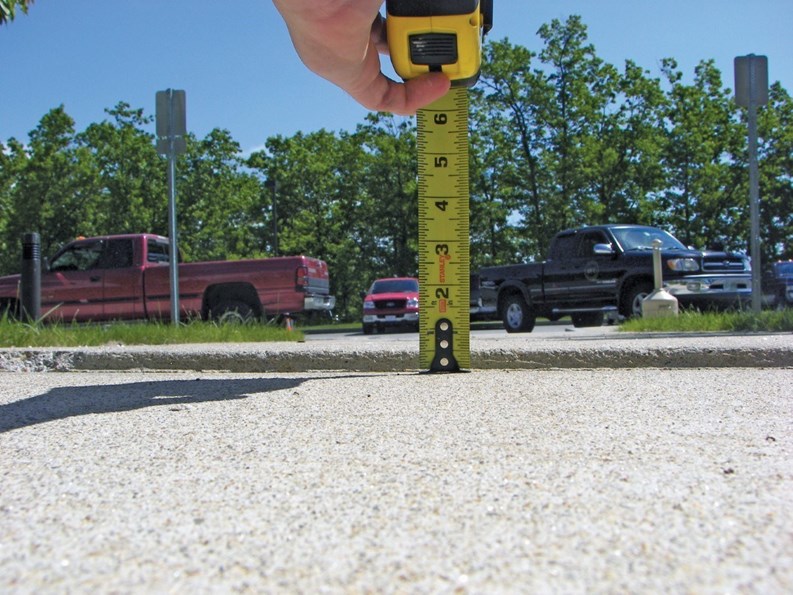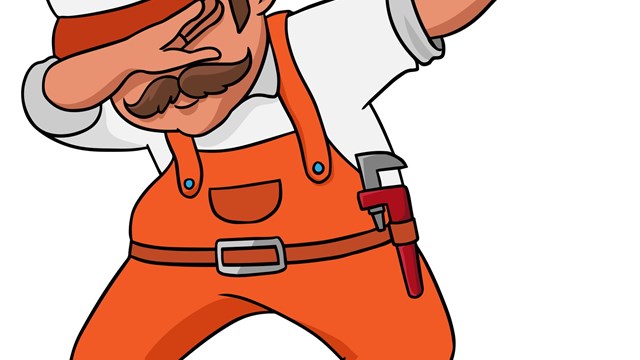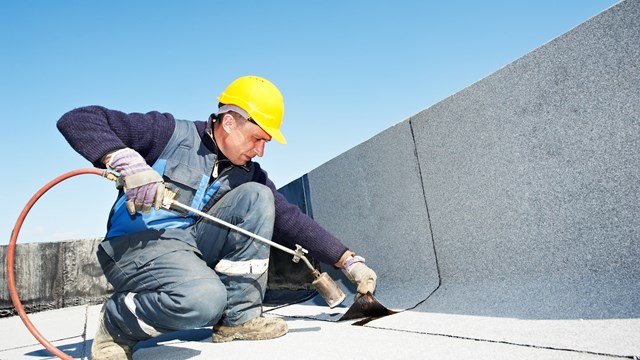Years ago, the only remedy for uneven sidewalks or foundations was what pros in the business call “rip out and replace,” which means tearing out the old pavement slab and pouring a new one – and spending a lot of time and money doing it.
But today, rip-and-replace is likely to be passed over in favor of “mudjacking” – also sometimes called “slabjacking” – and for a lot less time, hassle, and money, your sidewalk, concrete stoop, or slab foundation can be level again.
Determine The Need
The need for mudjacking is usually easy to spot. If a section of sidewalk or slab foundation has sunk into the ground – and the section hasn’t crumbled or disintegrated too much – a specialist begins by drilling a small hole through the slab. Once completed, a mud-like substance, commonly referredto as “slurry,” is pumped through the opening, creating pressure to lift the slab back into position. The hose is then retracted, and the hole is filled in with concrete or asphalt.
While the process – and accompanying result – may sound almost too goodto be true, concrete industry professionals say it’s a sound solution that can save time, disruption, and money.
“There are a few different factors that lead people to consider slabjacking,” says Richard Porter, PE, a soils engineerwith Engineered Foundation Tech-nologies in Nashua, New Hampshire. “Number one is the cost. Slabjacking can be done for a half to a third of the cost of tear out and replacement.
“Another benefit is the amount of time it takes. Most of our projects canbe done in one or two days, and with minimal impact to the facility.” The alternative, tearing out and replacing, can lead to a host of problems, he says, especially in a well-traveled area.
Industry experts note that, as with any project that may involve safety issues, it’s important to hire a professional. A skilled mudjacker has to be wary of where utilities, drain pipes, and even sewer pipes are located so none willbe filled with the slurry. The ground also has to be evaluated to see if it can stand up to the mudjacking process.
And the long-term success of the project will depend, in large part, on “what the problem was in the first place,” Porter adds. Many of the cracksand dips affecting concrete slabs stem from improper preparation of the soil before the concrete was poured. “If the soil is a little softer than it should have been, the sidewalk can sink over time,” he says.
Kelly Page, technical director of the International Concrete Repair Institute(ICRI) in Rosemont, Illinois, puts it succinctly: “If you don’t fix what caused the slab to settle in the first place, you’ll still have the problem.” Often, the concrete or the pavement is just fine, but the underlying soil causes the problem when it settles.
While slabjacking is widely used to correct an array of leveling problems in cement, if the landscape underneath is swampy, the process isn’t likely to help the situation. When doing an evaluation and estimate, the mudjacker will determine the state of the ground. If, for example, there is a sinkhole beneath the slab, slabjacking won’t work solve the problem. On the other hand, if the settling is caused by the fact that a builder left tree stumps buried on the property – which will rot and continue to cause voids underneath the concrete, it may be cost-efficient to simply slabjackevery few years rather than to rip out and replace the concrete.
And the process is not just for outdoor projects. In addition to using mudjacking to level sidewalks and concrete stoops, entire slab foundations can be leveled with the same technique. Porter recalls a recent job at a large distribution center in Massachusetts, where his company was able to repair a problem floor without interrupting operations at all.
While mudjacking was once seen mostly in commercial settings, it’s become increasingly common in the residential arena, as property owners recognize the savings involved.
“We did a property in Marlboro [Massachusetts], with10 buildings in the complex. There were literally miles of sidewalk,” Porter says. “We slabjacked them and saved a ton of money.” And at a Massachusetts townhouse, the process was used to raise a sinking dining room. “The floor started sinking, pulling away from the walls. With interior situations, you have all this kitchen work, maybe a lotof finish work that you would have to rip out to repair the slab. We can do slabjacking with minimal disruption to the homeowner.”
Patios – especially around pools – also lend themselves to the process. “If you have a lot of beautiful landscaping around the pool, you have to consider the cost of replacing the landscaping” after a rip-and-replace operation. For slabjacking, the heavy equipment – the mixer – stays on the paved driveway and a small pump is driven out to the patio, avoiding damage to the landscaping.
Playing It Safe
When lips and cracks become safety issues, condominium associations have to consider liability. A New Jersey contractor notes that if sidewalks aren’tlevel, even a one-inch tripping hazard can spell a hospital stay for an elderly pedestrian – and a liability headache for the association.
The nearly instant usage of the affected surface is another factor that makes mudjacking so much more preferable to a rip-and-repour. It’s also not nearly as disruptive to owners. Theslurry is mixed in a truck outside the building, dumped into a hopper, and wheeled into a pump.
Then the slurry is pumped through a hose down into the slab, so dust is minimal. A condo owner may end up with a little bit of slurry on the floor of their entry hall, but it’s not somethingthat can’t be cleaned up with a broom at the end of the day – a far cleaner alternative than the dust storm that is made from a rip-and-repour job.
“With our traditional method, we mix a specialty mix of sand, cement andother materials on site. The material is clean – when it dries, it turns to soil,” Porter says.
A new material on the slabjacking market – polyurethane – is gaining popularity because of its strength and quick setup time. Already popular with highway departments in the west, where concrete roadways are common, the polyurethane foam sets up in about15 minutes, so it can be driven over almost immediately.
And It’s Green
Another benefit of mudjacking, surprisingly, is that it is more environmentallyfriendly than repouring concrete. Think about it: ripping out to replace a patio or expanse of sidewalk means creating piles of debris to take to the dump. Saving the existing concrete surface means avoiding that demolition debris.
“It’s incredibly sustainable and ‘green,’ all the things that people are looking for these days,” Page notes. “We look at the whole world of repair as being the greenest industry.” ICRI, which has chapters throughout the country, maintains an online membership directory at www.icri.org that can helpassociations and property managers find industry professionals to tackle concrete-related problems.
Depending on your situation, mudjacking may be a cheaper, cleaner, and quicker way to level a foundation or concrete slab. Doing so also helps prevent accidents –and makes the area look a lot nicer than before. “It’s funny when you see mansions and really nice buildings,” an industry expert quips, “and the sidewalk looks like someone’s broken teeth.”
Pat Gale is associate editor of New England Condominium magazine. Michael Norris, an editor and freelance writer, contributed to this report.







Leave a Comment